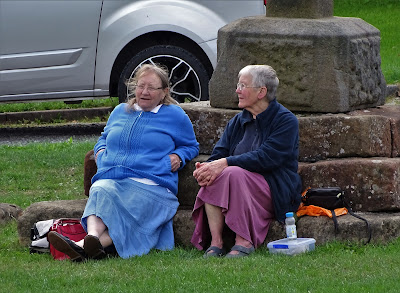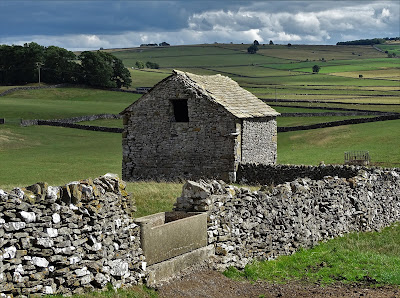 |
| Kirkmaiden Church before being "blessed" |
One of the nice things about having a blog is that you can more or less write about anything you want to. Today, I shall approach a subject that is almost taboo - bottom wiping. Yes - bottom wiping. And having uttered that term I can already see blog visitors from across the world clicking away and grumbling, "That's the last time I visit Yorkshire Pudding!" So be it.
When Shirley and I were at Monreith in south west Scotland just last month, she opted to sit on the beach one afternoon reading her novel while I went off to find a church that I had spotted on my map. It's called Kirkmaiden Church and it is no longer in use. Built into the cliffside amidst woods, it overlooks Front Bay in sight of The Mull of Galloway.
Along the beach then up into the woods and there it was with its magnifient red sandstone doorway. Adjacent to it there was the ruin of a much older church but I had a problem. A personal problem and it was becoming quite urgent. I needed to defecate. There was no time to get back to the car park where Clint was parked. I remembered there was a blue council porta-loo there.
No. This business needed to be settled and settled quickly or the consequences would be dire. I'd be walking back to her ladyship like a waddling duck, smelling like a Danish pig farmer. Action was vital but I had no toilet paper on me. I grabbed a couple of handfuls of dried summer grasses from the recently mown churchyard and headed for a shady corner.
There relief was duly obtained. I shall not go in to the fine details of this evacuation but the dried grasses were successfully utilised and a measure of rear cleanliness was achieved. Fortunately there were no thistles or creepy crawlies in the dried vegetation I had requisitioned for this intimate occasion.
 |
| Doorway at Kirkmaiden Church |
Back on the beach I washed my hands in the sea and built another tower of beach cobbles. I got to thinking about toilet paper and what people did before it was manufactured. Mass production of toilet paper in the western world did not begin until 1857 though wealthy Chinese families had been using paper to wipe their bottoms for many centuries before that.
It was common in the Roman world to use sponges on sticks (tersorium) that were kept in vinegar containers. And in India today, the majority of people in both country or city simply use their hands with water. Imagine rural scenes in India if every Indian peasant used toilet paper after squatting in the fields. After a few weeks it would look as if the country had been hit by a massive snowstorm.
 |
Izal toilet paper was non-absorbent
Used widely in English schools in
the 50's and 60's |
Historically, in England, what you used to wipe your bottom often depended on your location and social status. You might use seaweed, sheep's wool, dried leaves, pebbles, sea shells, dock leaves, fur or yes - like me at Kirkmaiden - handfuls of dried grasses. Incidentally, those ancient methods were surely more kind to our environment. We take toilet paper for granted these days but it hasn't always been with us.
My grandmother ran away with with my step grandfather in the 1930's. They ended up living in humble social housing in Newcastle with a lavatory in their yard. As a boy I was always delighted to see newspaper squares on a nail in there. You could read before putting these squares to a more basic use.
Have you got any bottom wiping tales or information you would like to share dear reader? Don't be shy.
 |
| Xylospongium (Greek) or tersorium (Roman) - Replica |





















































